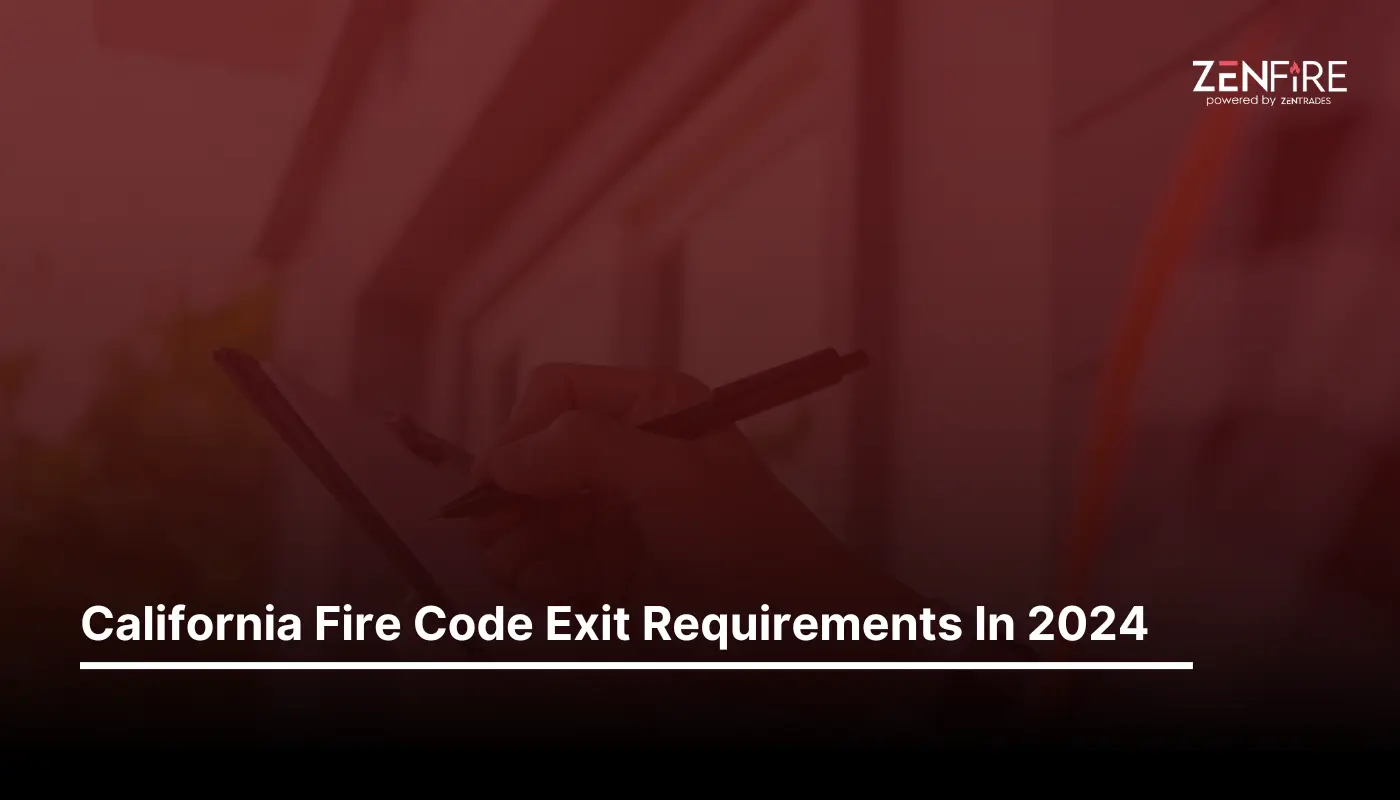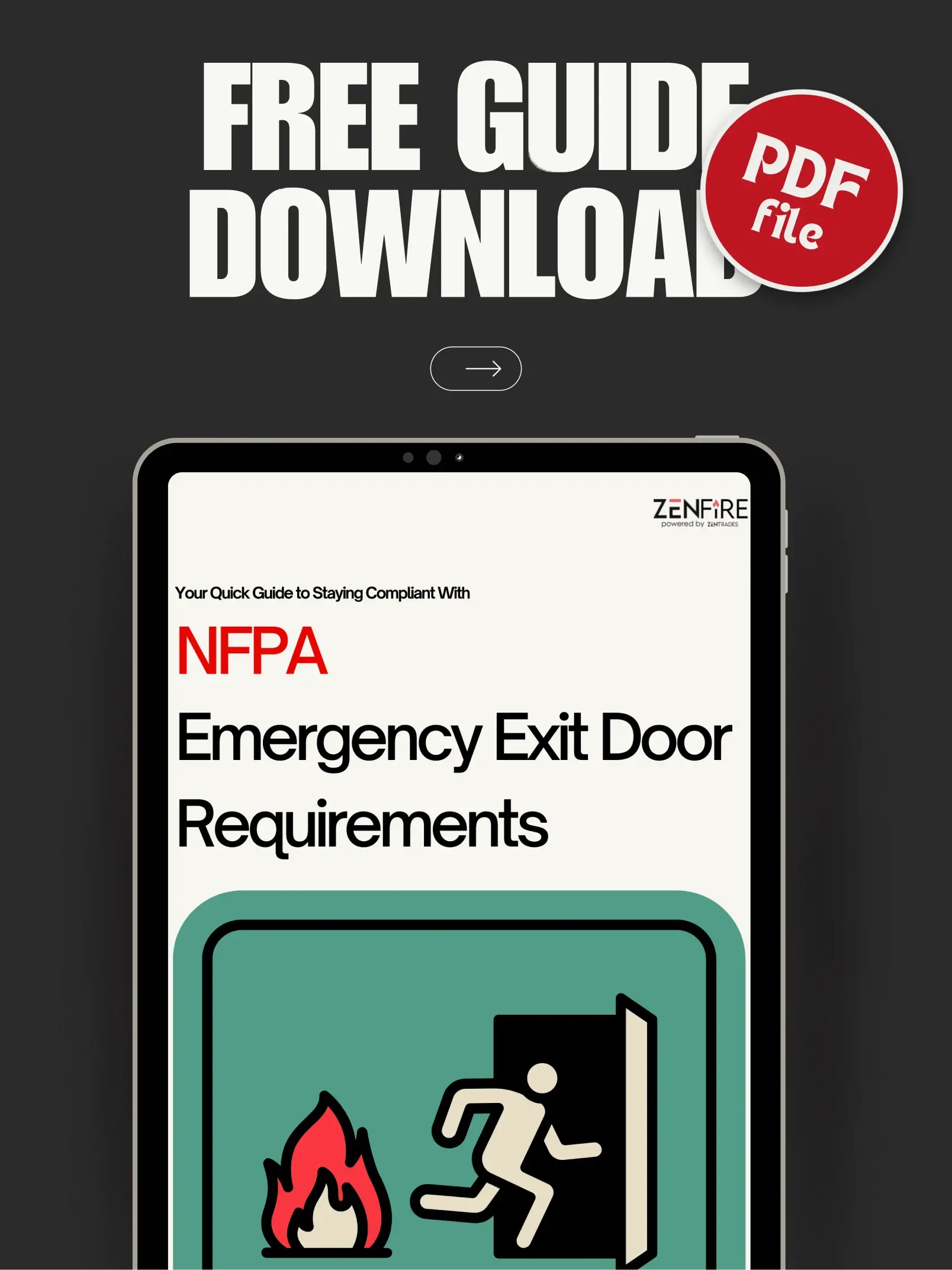California Fire Code Exit Requirements In 2024
- Field Service Management
- 9 Min Read
During a fire emergency, be it in a residential building or commercial establishment, the most crucial part of safety procedures is to facilitate swift egress. This is followed by successfully evacuating all individuals present, ensuring everyone is safe, secure, and injury-free.
Imagining a fire incident itself is super horrifying. Be it a property catching fire or a wildfire incident. Remember the California wildfires that burned acres of land from 2020 through 2021? A never happened before moment in history. Even five years later, in today’s date, survivors are troubled with post-traumatic stress disorders accompanied by sleepless nights.
Well, preventing wildfires requires a different strategy. But mitigating property fires and ensuring a safe evacuation for individuals? That is pretty doable and halfway done with just a simple step: adequate compliance with fire code exit requirements.
Fire code exit requirements are a practical and beneficial guide to help you better understand the required safety procedures for constructing a proper egress and evacuation procedure.
In this blog, we will learn the essential fire code exit requirements for California and how to ensure the safety of your building occupants in a fire emergency.
Here What We Cover
Why Implement Fire Code Exit Requirements?
Fire code exit requirements ensure you and your loved ones are safely evacuated from a building that has caught a severe fire. And how is that possible? These fire codes are strategic guidelines that prevent chaos and blunders from prevailing in an emergency.
The numero uno reason why fire code exit requirements are essential is because they provide you with life safety. They help you protect lives and property and help evacuate safely and quickly. If your building complies with fire codes and policies, it minimizes the occurrence of an injury due to chaos and panic during evacuation. This enables a clear and accessible pathway to and from the building and makes the evacuation procedure swift and uncomplicated.
Apart from the aforementioned points, fire code exit requirements help in better emergency response and containment of fire. This can control and prevent the rapid spread of fire to other parts of the building. Last but not least, adhering to fire code exit requirements for your property helps owners and property managers comply with government and state regulations, helping to reduce potential liabilities to a greater extent.

Use our free estimate template now
Make winning quotes in minutes—for any industry and any job.
Fire Code Exit Requirements For California
The primary requirements for a compliant exit refer to criteria such as the number of exits, exit access, and width, exit doors, emergency lighting, emergency signage, fire-resistant doors, smoke barriers, egress windows, etc.
The California Code of Regulations, Title 24, Part 9 mentions specific requirements, which are broadly explained below:
General Exit Requirements
Number Of Exits: must have atleast two exits, but the requirement can vary based on the building type and occupancy.
Exit Width: must accommodate the occupant load. Generally, 0.2 inches per occupant is considered for stairs. For other exits, 0.15 inches are taken into consideration.
Egress Capacity: must provide sufficient capacity for the occupant load of the building.
Door Requirements
Door width and height: Minimum width of 38 inches with height of 80 inches.
Exit Pathways
Corridor Size: for most occupancies, the requirement is 44 inches wide. If the occupancy is less than 50 occupants, 36 inches can be considered.
Obstructions: pathways must be unobstructed and remain clear at all times.
Emergency Signage And Lighting
Exit Signs: must be clearly visible at all times. It should be placed at each exit gate and along the pathway to show directions.
Emergency Lighting: must provide illumination for at least 90 minutes during a power outage.
For precise requirements of your building or property, you can refer to a fire protection professional. They’ll be able to provide you with the necessary information and make sure that your building is compliant with all codes and regulations.
Get posts like this in your inbox.
Keep learning how to run a 5-star business with our bi-weekly newsletter.
Conclusion
Imagine you’re trying to make your newly constructed property in Canada code compliant or adjust your existing building according to the fire code. In that case, these guidelines will definitely come in handy for you. These are not optional but a mandatory measure to ensure that your property has robust egress and evacuation procedures in place. Not only that, but it is also very strategically optimized in such a way that evacuating the property or building in case of danger is swift and confusion-free.
At ZenFire, we provide a plethora of resources that can help you conduct a preliminary check of your space and building. Our resources include blogs, free tools, and invaluable checklists that can make your process easier to identify and mitigate obvious violation codes.
If you’re a fire safety business owner and looking for a software solution that can help you conduct your inspections in one go, we might have the perfect solution for you! Book a personalized demo with us today, and let us show you the untapped potential of your business.

Explore a better way to grow your business. Book a free demo now!
Get organized, win jobs, and wow customers.
Book A Free Demo with ZenTrades Today!
Related Reading
Why Your Field Software Management Software Needs QuickBooks Integration
ZenTrades Why Your Field Service Management Software Needs QuickBooks Integration Read More Request Demo...
Read MoreZenTrades How To Manage Electrical Service Agreements Like...
Read MoreZenTrades The Best 5 Jobber Alternatives In 2023...
Read More


